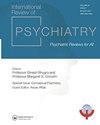如何设计和实施小组诗歌活动
IF 3.7
4区 医学
Q1 PSYCHIATRY
引用次数: 1
摘要
摘要以博物馆为基础的学习活动为医学教育中人文艺术的整合提供了互动创新的途径。像其他以博物馆为基础的活动一样,小组诗歌支持多种临床相关技能和属性的发展,如观察、沟通、换位思考、同理心和内隐偏见意识。在本文中,我们提出了一个循序渐进的指导教育工作者寻求设计和实施一个以博物馆为基础的小组诗歌活动医学学习者。该活动的总体“任务”是让学习者集体创作一首他们为他人表演的诗,参与者发现这个过程对他们作为医生的形成很有吸引力和意义。在本文中,我们提供了具体的指导,包括预先选择艺术作品,准备材料,分成小组,为学习者提供迭代的指导,管理会议的时间,以及对活动进行汇报。虽然设计是为了在艺术博物馆中体验,但我们注意到,小组诗歌活动也可以在教室中进行,或者使用艺术品的照片或数字复制品进行虚拟。关键词:视觉艺术与人文交流技巧博物馆教育医学教育披露声明作者未报告潜在的利益冲突。额外的informationFundingDr。Chisolm是Paul McHugh人类繁荣项目的主任,她的工作得到了该项目的支持。本文章由计算机程序翻译,如有差异,请以英文原文为准。
How to design and implement a Group Poem activity
AbstractMuseum-based learning activities provide interactive and innovative ways to integrate the arts and humanities into medical education. Like other museum-based activities, the Group Poem supports the development of multiple clinically relevant skills and attributes, such as observation, communication, perspective-taking, empathy, and implicit bias awareness. In this paper, we present a step-by-step guide for educators seeking to design and implement a museum-based Group Poem activity for medical learners. The overall ‘task’ of the activity is for learners to collectively create a poem that they perform for others, a process that participants find to be engaging and meaningful to their formation as physicians. In this paper, we provide specific directions on pre-selecting the works of art, preparing the supplies, dividing into small groups, providing iterative instructions to learners, managing the timing of the session, and debriefing the activity. Although designed to be experienced in an art museum, we note that the Group Poem activity can also be conducted in the classroom or virtually using photographic or digital reproductions of artwork.Keywords: Visual artsarts and humanitiescommunication skillsmuseum educationmedical education Disclosure statementNo potential conflict of interest was reported by the author(s).Additional informationFundingDr. Chisolm is the Director of the Paul McHugh Program for Human Flourishing, through which her work is supported.
求助全文
通过发布文献求助,成功后即可免费获取论文全文。
去求助
来源期刊

International Review of Psychiatry
PSYCHIATRY-
CiteScore
5.10
自引率
0.00%
发文量
85
期刊介绍:
The International Review of Psychiatry is the premier review journal in the field with a truly international authorship and readership. Each bimonthly issue is dedicated to a specific theme relevant to psychiatry, edited by recognized experts on the topic, who are selected by the Editors and the Editorial Board. Each issue provides in-depth, scholarly reviews of the topic in focus. The Journal reaches a broad international readership including clinicians, academics, educators, and researchers who wish to remain up-to-date with recent and rapid developments in various fields of psychiatry. It aims to be of value to trainees by choosing topics of relevance to career development, which are also suitable for clinicians for continuing professional development.
 求助内容:
求助内容: 应助结果提醒方式:
应助结果提醒方式:


